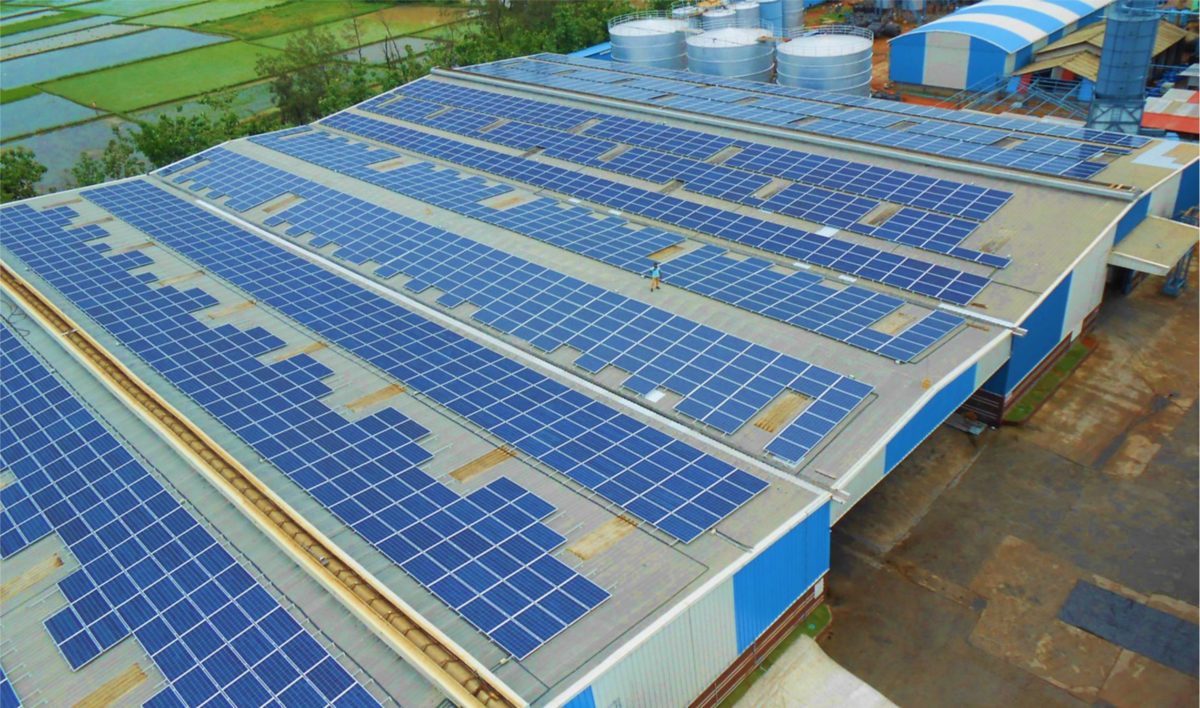From pv magazine International
Channeling Covid-19 stimulus money towards renewables generation capacity as part of a green recovery could create 42.8 million jobs and a ten-year, $2.5 trillion investment opportunity in some of the world’s main emerging markets.
The International Finance Corp (IFC) private-sector arm of the World Bank has crunched the numbers and calculated a green recovery from the pandemic could generate 213 million jobs and $10.2 trillion of investment this decade in 21 emerging market economies.
As part of that calculation, carried out with U.S.-based market research company Guidehouse Insights, the IFC stated solar panels would supply 83% of the estimated $900 billion investment and 23.9 million jobs which could be created by funding small-scale, ‘distributed’ generation and energy storage systems.
Sectors
The IFC report considered ten key sectors which would reap the biggest rewards in the emerging markets studied, in terms of investment opportunity, job creation and greenhouse gas reduction. The sectors of the economy examined included the expansion of renewables capacity – with grid scale and distributed systems considered separately; the decarbonization of heavy industry; and the greening of urban transport.
Utility scale renewables investment over the next ten years could offer a $1.6 trillion investment opportunity, create 18.9 million new jobs and remove 813 million tons of greenhouse gas emissions, according to the study. The report compiled figures across 21 nations in six global regions. Grid scale renewables could offer a $787 billion investment and 7.9 million new jobs in the East Asia and Pacific region comprised of China, Indonesia, the Philippines and Vietnam, according to the IFC, with most of that opportunity represented by China, the world’s solar capital.
South Asia
The South Asian markets of Bangladesh and India would offer a $424 billion grid scale renewables opportunity and 4.3 million jobs to 2030; followed by Latin America (Argentina, Brazil, Colombia and Mexico), with $187 billion and 2.5 million jobs; Europe (Russia, Serbia, Turkey and Ukraine), with $83.7 billion and 1.4 million openings; sub-Saharan Africa (Côte d’Ivoire, Kenya, Nigeria and South Africa), with $63.6 billion and 2.2 million new positions; and the Middle East and North Africa (Egypt, Jordan and Morocco), with a $46.3 billion market and the potential for 500,000 jobs.
In addition to the usual calls for governments to help by drafting supportive policy, offering skills training and reducing planning red tape, the IFC demonstrated its private-sector credentials by advising against the application of local content requirements and state-owned-grid-company monopolies. The authors of the report also stressed the need to amend regulatory systems to properly reward flexible grid and energy storage capacity.
In terms of the rewards on offer from expanded small scale and off-grid renewables capacity, the report split the anticipated investment opportunity as $570 billion for residential systems and $341 billion from commercial assets, with a potential 23.9 million new jobs available this decade. East Asia would offer a $525 billion market and 13.2 million jobs, according to the study; South Asia $283 billion and 7.1 million jobs; Latin America $52.7 billion and 1.9 million positions; Europe $33.4 billion and 900,000 opportunities; sub-Saharan Africa $10 billion and 500,000 vacancies; and the Middle East and North Africa (MENA) region $7.3 billion and 200,000 openings.
The IFC called for a standardized small scale renewables quality ratings system to help investors aggregate such small installations into more attractive and easier-to-manage portfolios.
Despite trailing green hydrogen as one of two solutions for decarbonizing heavy industry, however, the report gave the impression the sustainable form of the fuel had been tacked on as an afterthought, as most of the heavy industry section emphasized the promise of carbon capture, usage and storage – to the extent no estimates or recommendations were offered up related to green hydrogen.
Textiles
With the study considering the global textile industry as one of its key emerging market sectors for decarbonization, the IFC cited its work to drive renewables capacity among the supply chain companies of global clothing brands Levi and H&M, but the real headline figures were related to the greening of urban transport.
With the IFC considering private transport and commercial delivery fleets under that header, along with public transport, the study estimated the sector could represent a $2.7 trillion market this decade and supply 53.4 million new jobs. Recommendations included expanding public transport networks and cashless payment; reducing the cost of electric vehicle finance; local authorities expanding charging infrastructure; staggering public employee working times to ease rush hours; and applying sustainability requirements to support for motor manufacturers.
The other key sectors studied in the IFC report were energy efficient building retrofits; low carbon municipal waste and water; nature-based urban infrastructure; climate-smart agriculture; and low carbon shipping and aviation.
This content is protected by copyright and may not be reused. If you want to cooperate with us and would like to reuse some of our content, please contact: editors@pv-magazine.com.









If the World spends $2.5 Trillion on Renewable Energy Projects this decade… or ten years. It will take close to 100 years to only reduce Pollution, not eliminate it, if at all as Population and Development will keep adding more than is offset by such RE Projects……
The World needs at least $7Trillion/yr over the next 30 years to “OVERPOWER POLLUTION” and then Eliminate it…. After 30 Years, the 30 Year Old Panels will have to be replaced and a $7-10Trillion/Year RE Industry would …. revitalize itself every 30 years… and even grow to meet increasing Demand.
$2.5 Trillion in 10 Years will achieve…. NOTHING like the Actions of the UN so far…. Remember…. The IPCC Report confirmed the link between Pollution & Climate Change in 1990, thirty years ago (The former Kills and Disables today…. ~9 Million Deaths and 275 DALY of Suffering Annually around the Globe, whereas the latter “threatens” Irreversible Climate Change).
However, Pollution “Refuses To Go” as the “ACTIONS DO NOT MATCH THE NEEDS” even as many more People continue to Die and Suffer from Pollution, than COVID around the Globe in 2020.